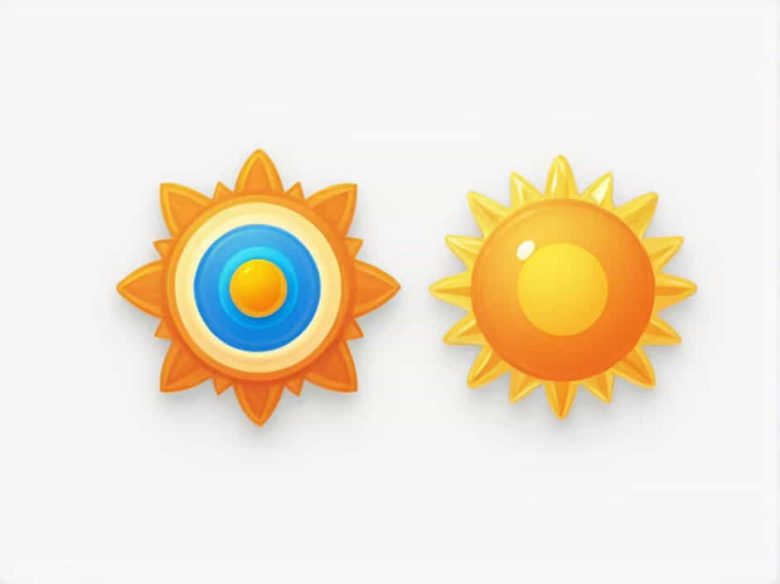Earth orbits the Sun in an elliptical (oval-shaped) path, meaning our distance from the Sun changes throughout the year. Two key points in this orbit are perihelion and aphelion.
- Perihelion is when Earth is closest to the Sun.
- Aphelion is when Earth is farthest from the Sun.
Understanding these points helps explain seasonal changes, orbital mechanics, and how planetary motion works.
Definition of Perihelion and Aphelion
What Is Perihelion?
Perihelion comes from Greek words meaning “near the Sun.” It is the point in Earth’s orbit when our planet is closest to the Sun.
- Occurs around January 3rd each year
- Earth is approximately 147 million kilometers (91 million miles) from the Sun
- The Sun appears slightly larger in the sky
- Earth moves at its fastest speed in orbit
What Is Aphelion?
Aphelion comes from Greek words meaning “away from the Sun.” It is the point in Earth’s orbit when our planet is farthest from the Sun.
- Occurs around July 4th each year
- Earth is about 152 million kilometers (94 million miles) from the Sun
- The Sun appears slightly smaller in the sky
- Earth moves at its slowest speed in orbit
Why Do Perihelion and Aphelion Occur?
Earth’s orbit is not a perfect circle but an ellipse, as described by Kepler’s First Law of Planetary Motion. This means the Sun is slightly off-center in Earth’s orbit, causing variations in distance.
Additionally, according to Kepler’s Second Law, Earth moves faster when it is closer to the Sun and slower when it is farther away.
Does Perihelion Cause Summer and Aphelion Cause Winter?
Many people assume that Earth’s distance from the Sun determines the seasons, but this is a common misconception.
Seasons Are Caused by Earth’s Tilt
The real reason for seasons is Earth’s axial tilt (23.5 degrees), not our distance from the Sun.
- When the Northern Hemisphere tilts toward the Sun, it experiences summer, even though Earth is at aphelion (farthest from the Sun).
- When the Northern Hemisphere tilts away, it experiences winter, even though Earth is at perihelion (closest to the Sun).
This explains why Australia and South America experience summer in January, while North America and Europe experience winter.
How Perihelion and Aphelion Affect Earth
Although they don’t cause seasons, perihelion and aphelion do have small effects on Earth’s climate and environment.
1. Solar Energy Differences
At perihelion, Earth receives about 7% more solar radiation than at aphelion. However, this difference is too small to significantly affect global temperatures.
2. Orbital Speed Variations
- At perihelion, Earth moves at about 30.3 km/s (67,000 mph).
- At aphelion, Earth slows to about 29.3 km/s (65,000 mph).
This means that winter in the Northern Hemisphere is slightly shorter, while summer is slightly longer.
3. Changes in the Length of Seasons
Because Earth moves faster near perihelion and slower near aphelion, seasons are not exactly equal in length:
- Winter in the Northern Hemisphere (shortest season): About 89 days
- Summer in the Northern Hemisphere (longest season): About 93 days
Perihelion and Aphelion on Other Planets
All planets in the Solar System have perihelion and aphelion, but the difference is much more extreme for some planets.
Examples:
- Mercury has the most elliptical orbit, with a huge difference between perihelion and aphelion.
- Earth’s orbit is nearly circular, so the difference in distance is small.
- Pluto’s orbit is highly eccentric, causing dramatic changes in its temperature and distance from the Sun.
The Future of Perihelion and Aphelion
Due to gravitational interactions with other planets, the dates of perihelion and aphelion shift slightly over time. In about 13,000 years, perihelion will occur in July instead of January. This cycle is part of Milankovitch Cycles, which influence long-term climate changes like Ice Ages.
Perihelion and aphelion are important points in Earth’s orbit, but they do not cause seasons—that’s due to Earth’s tilt. However, they do slightly affect solar radiation, orbital speed, and the length of seasons.
Understanding these concepts helps us appreciate Earth’s motion in space and how it influences our planet’s climate and timekeeping.



